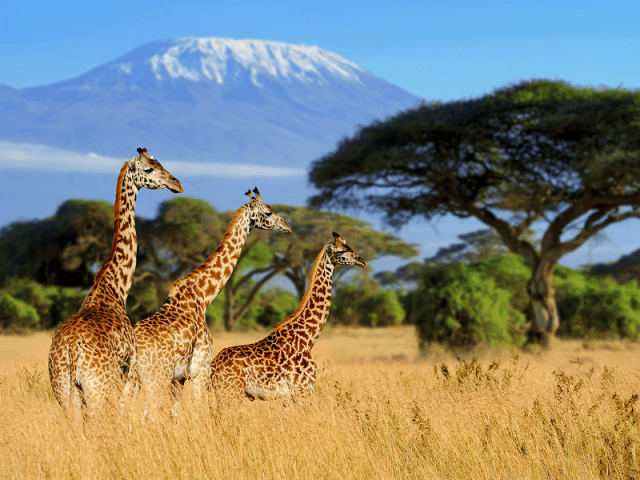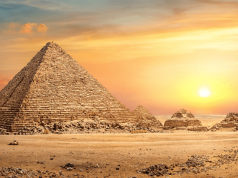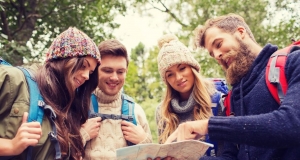Mount Kilimanjaro is located three degrees south of the equator in Northeastern Tanzania. It is the tallest mountain in Africa and is the highest free-standing mountain in the world. This immense mountain is made up of three volcanoes: Shira, Mawenzi, and our goal, Kibo, the tallest one in the middle.
Of the famous highest seven peaks in the world, this is the easiest to get to and the easiest to climb. It requires no technical climbing experience, and any moderately fit person can summit the mountain. Though Mount Kilimanjaro is frequented by an estimated 50,000 hikers a year, the trek is not to be taken lightly. Sufficient physical conditioning and a lot of preparations must be made in order to ensure a safe, enjoyable experience.
Kilimanjaro Climbing Routes: All the Kilimanjaro routes we offer are very scenic and offer an exhilarating experience. The success rate for reaching the peak is greatly determined by your ability to acclimate to the high altitude. Spending more days ascending the mountain will give your body more time to adequately adjust to the altitude and low oxygen environment.
Trekking: Daily travel time varies depending on the route and day. On average you should expect to be hiking for 4-6 hours per day with the exception of “summit day”, which is an arduous 11-16 hour trek. Our guides will purposely set a slow walking pace to ensure group cohesion (“pole, pole”, or “slowly, slowly”) in order to give each climber adequate time to acclimatize and adapt to the thinning air. Expect a lot of uphill and downhill walking, which is why you should make sure you’re sufficiently conditioned before your trip.
Each route we use on our Kilimanjaro trek is well defined and screened for safety, but after heavy rains, the lower slopes and areas near the summit can become muddy. The guides will help you along the path and ensure you’re safe when you encounter difficult areas.
During the day you’ll carry a medium-sized backpack carrying the essential items you’ll need for that day of climbing until you reach that night’s campsite. You should only carry essential supplies such as extra layers of clothing, water, snacks, sunscreen, insect repellent, etc.
Climate: Because bad weather affects your chances of reaching Kilimanjaro’s peak, choosing the right time of year is imperative to your summiting success.
Kilimanjaro’s climate varies greatly depending on the time of year. It’s best to plan your climb during the driest months of the year – Jan, Feb and Aug, Sep. But you’ll experience reasonable weather any time between January-mid March and June-October. We don’t recommend trekking during the long rainy season between the end of March and the beginning of June or the shorter rainy season from November to the beginning of December.
You should prepare to pass through a variety of weather conditions – from forest terrains and desert valleys to snowcapped mountain trails and freezing temperatures near the peak. You can find information on what to pack for your Kilimanjaro trek on the faqs page.
Best time to climb Mount Kilimanjaro: When to climb Mount Kilimanjaro safe, how to climb mount Kilimanjaro climbing route, When to climb Mount Kilimanjaro? or How to climb Mount Kilimanjaro?
The fact is most of the month have a few rainy days makes it possible to climb relatively good condition all the year-round.
During the rain period of March and May, the cloud tends to pile up and over the summit, dropping snow on top and at the base. Visibility can be limited by cloud cover even when no rainfalls. The temperature at this time of the year is relatively warm.
The dry season beginning in late June and through July can be very cold at night but usually is clear of the cloud.
August and September are also cool and can have completely clear days, but usually, a dripping cloud belt girdles the mountain above the forest moorland. The summit can be totally clear.
The shorter rainy period of October to December often has thunderstorms that pass over the mountain, dropping rains as they go. Typical the cloud disappears in the evening leaving the nights and morning very clear with excellent visibility.
January and February are usually dry, warm and clear with brief rain showers which make good climbing condition.
Even though one can climb thought out the year, January, February, and September are the best month with July, August, November, and December are also good.


















